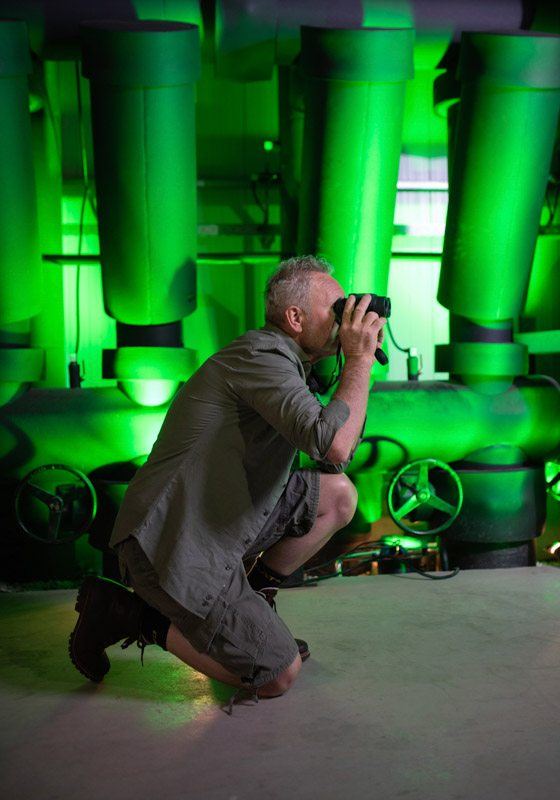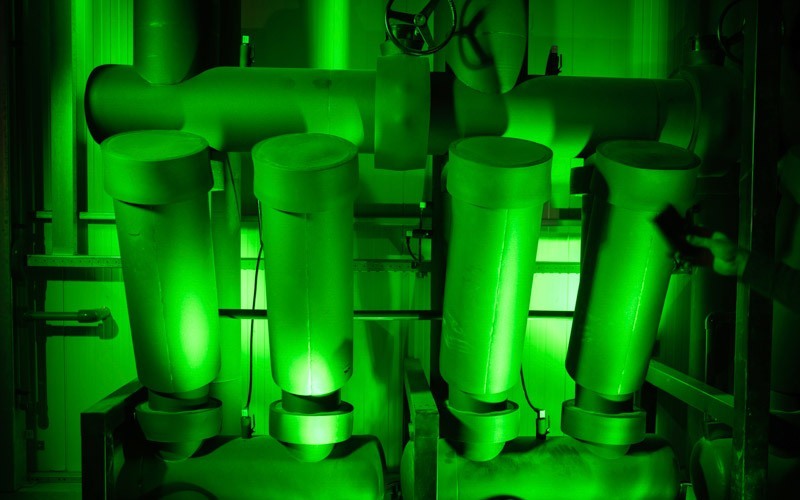“Grow the best red roses in the world with a minimal impact on the environment”

INTRODUCES
GREEN NAOMI ROSES*



EVERLASTING WORLD
We are proud to introduce the most eco-friendly rose, the RED NAOMI FUTURA. According to the new European calculation method, this rose has the lowest carbon footprint of all roses available on the European market. The FUTURA label is Porta Nova’s greenest scenario, based on 2023 data and 100% wind energy.
EVERLASTING QUALITY
Having completed the installations of the “Climators,” private power line, and LED lighting, we now have the option to grow perfect roses without using (fossil) gas and can choose 100% wind energy as our source. At a small premium we now offer you the choice to buy our top quality Red Naomi assortment with the lowest footprint possible.
EVERLASTING CARE
Growing with the lowest CO₂ footprint is great, but sustainability is about more than just carbon. Water usage and pest control are other key factors to consider.
We collect rainwater from our roofs and those of our neighbors to irrigate our plants. Our closed-loop fertilization systems ensure 100% reuse of excess water, with no spillage or waste, preventing any deposits in the soil.
We aim for 100% biological pest control, using natural predators to manage harmful insects. Additionally, we even employ a ‘solar cannon’ with UVC light that patrols our greenhouses to effectively target other pests.
With the help of footprinting tools based on the Flori-PEFCR, we are conducting a life cycle assessment. We’re confident we’ll perform well and identify areas for further improvement.
OUR COMMITMENT REMAINS: TO GROW THE WORLD’S BEST RED ROSES WITH MINIMAL ENVIRONMENTAL IMPACT.

OUR RED NAOMI ROSES
Porta Nova Red Naomi roses have a perfect red color that features a smooth, velvety shade. She is the only red rose with an extremely large flower-head & a subtle scent, so lovely that it will pamper your senses. She has it all: Long stems, outstanding transportability, superb vaselife. They are the ultimate floral gift if you want to impress someone or treat yourself!
At Porta Nova we strive to grow the best red roses in the world with a minimal impact on the environment.
We believe that many small changes can lead to big results. Constant improvement has enabled us to grow the world’s most beautiful Red Naomi roses.
To ensure a good future for our company and kids, we know we need a healthy Earth too. That’s why, besides improving the quality of our roses, we’re also focused on growing them in a sustainable way. It’s not just about the flowers; it’s about taking care of the planet too.

Over the past 8 years, we’ve invested significantly in various techniques to cultivate sustainably. Our goal is to grow Red Naomi roses with the lowest CO2 footprint in the industry. Central to our approach is the option to grow gasless and use of green wind energy instead! And since November 2023 we are able to switch 100% to wind energy, lowering our carbon footprint by 95%!
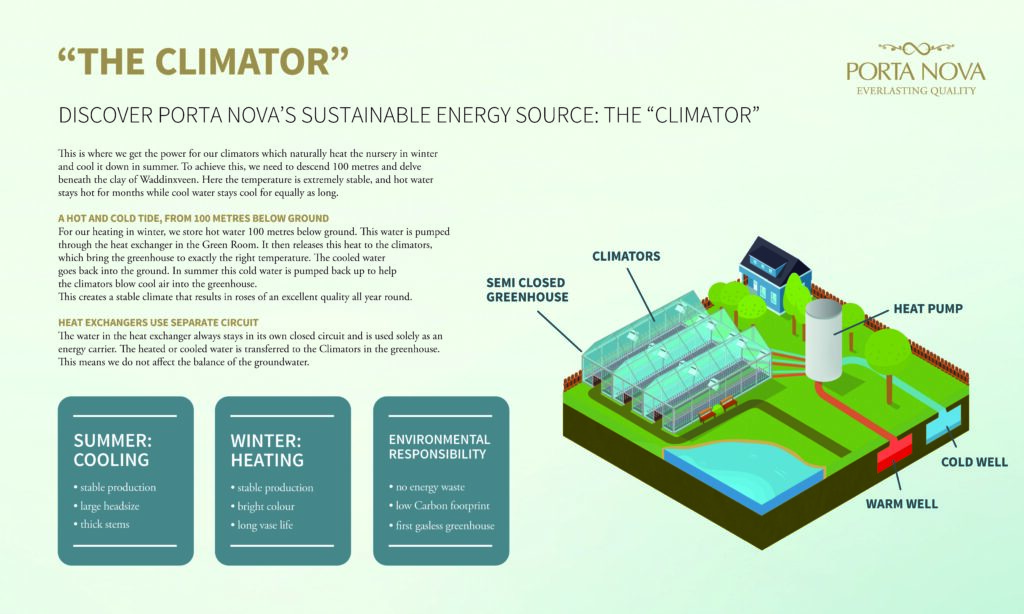
How did we accomplish that:
The Climator
We began by installing our ‘Climator’ System, which enables us to capture heat from the summer and store it as warm water 100 meters underground. In winter we use this same hot water again to heat our greenhouse in a super-efficient and sustainable way.
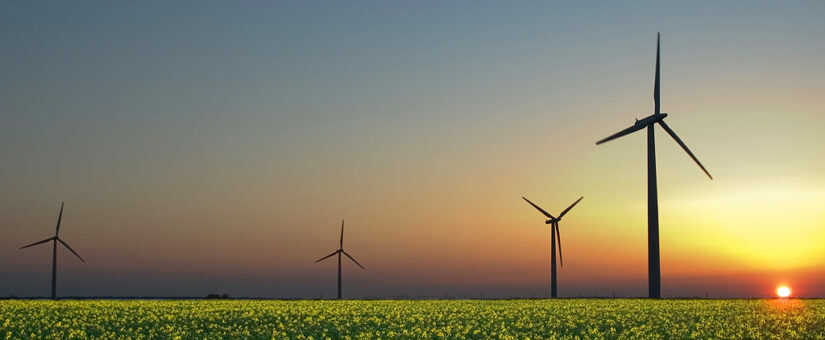
Green energy
Five years ago, we invested in a 6 km private power line connecting us to the nearest power station. This allows us to purchase electricity instead of relying on gas for heating and lighting. The added benefit is the flexibility to choose daily between gas and electricity. Additionally, the good news is that we have the option to select 100% green (wind) energy.
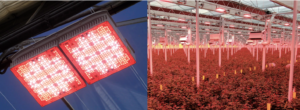
LED Lighting
“Our next significant step involved transitioning to LED lighting for more optimal light levels and increased energy savings. We started installing LEDs in 2022, completing the full transition by 2023. With the specialized ‘LED Light’ and the additional heat from the Climators, we now save 40% on both lighting costs and energy consumption.”
“Are you and your clients ready for Porta Nova’s FUTURA Red Naomi roses?”
The additional cost per stem to use wind energy is EUR 0.02 at the current green energy prices. For this minimal extra, you receive the absolute best quality Red Naomi roses with the lowest environmental footprint compared to any roses grown worldwide and sold in the European market.
When you’re growing over 70 million roses, EUR 0.02 per stem becomes a significant sum. It accumulates to an extent that shapes our existence as a company. We would really like to grow all our roses with 100% wind energy but cannot do that without you.
We have made all the necessary investments. The question is no longer how sustainable we can grow, but whether you are willing to pay the small difference in price for a better world.
it is our mission to introduce a more environmentally friendly rose to the consumer at a small premium. Shall we find a way together to avoid the compounding effect of margin escalation?


Why the compounding effect of margin escalation in the floral supply chain stands in the way of Introducing sustainable products at the grower Level
Margin escalation means that prices increase at each stage of the supply chain as every company adds its own markup. This is common in the flower industry, where multiple intermediaries each raise the price to cover costs and generate profit.
By the time the product reaches the consumer, it may appear as a significant price increase. So what began as a relatively small cost to support sustainability, might evolve to a potentially demand impacting price level.
This ‘compounding escalation’ effect explains why some sustainable initiatives, even if cost-effective at the source, can become prohibitively expensive for the end customer.”

Measuring footprint and making honest comparisons and choices.
“So, what roses to buy? Judging from the footprint of roses, this is a complicated question since there are many ways to look at things. “What is best?”
Is it better to buy from us, grown in the Netherlands close to the end market but from a greenhouse requiring heating and light? Or is it more sustainable to purchase from Africa or Ecuador, where the sun is free, but it means roses must be flown in by plane or you receive old roses that took a month to travel by boat? Different perspectives, different choices.
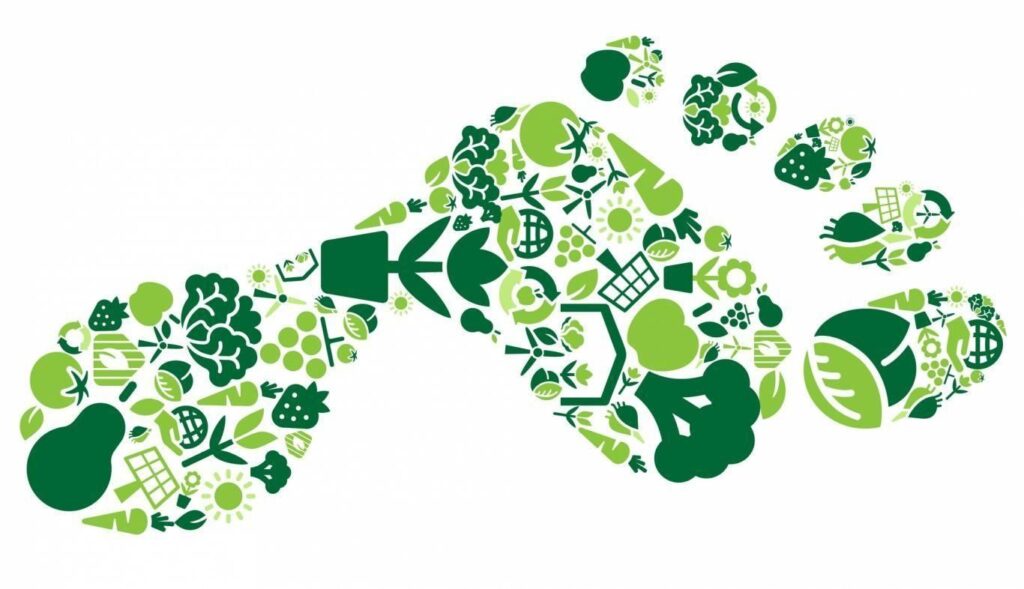
Flori-PEFCR
Until recently, nobody really knew how to make the correct calculation and comparison. That’s why it is great that the European Union signed the Flori-PEFCR standard on February 14, 2024.
Over the past few years, the Flori-PEFCR has been developed, setting a new standard for calculating the environmental impact of a cut flower or potted plant. The final version has now been signed by the European Commission. (learn more).
“PEFCR” stands for Product Environmental Footprint Category Rules. It is a set of guidelines for conducting life cycle assessments (LCA) of products.

Flori Footprint Tool
Early 2024, we implemented the Flori Footprint Tool developed by Greenhouse Sustainability. This tool provides us with deeper insights into our environmental impact by examining 16 impact categories, such as water usage, land use, and toxicity.
The Flori Footprint Tool is about to be certified FSI Compliant. We have worked hard together to upload all our data in the latest version. It results in being the first flower grower who can claim to have calculated their footprint based on the Flori-PEFCR regulations.
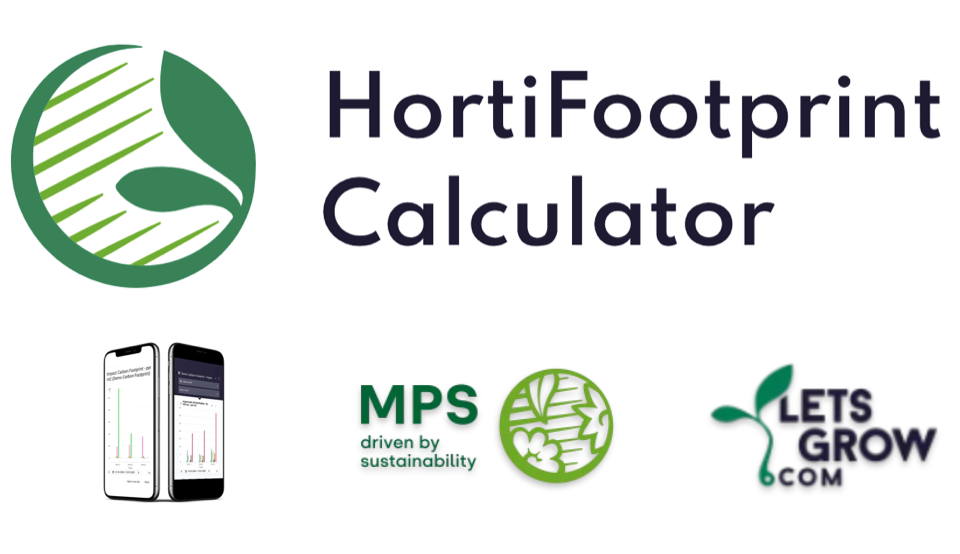
HortiFootprint Calculator
We started our calculations in 2023 using the first version of the “HortiFootprint Calculator.” Developed by MPS and LetsGrow.com, this innovative software measures the carbon footprint of horticultural production, aiding growers in making more sustainable choices. Importantly, it is based on the Flori-PEFCR regulations.
The HortiFootprint Caclulator has now also been updated to measure all 16 impact categories and is expected to be FSI Compliant soon. We are almost ready with the upload of our data in their latest version of the HortiFootprint Calculator.
How do we compare to import from Ecuador or Kenya

CO2 footprint scenario analysis: Rose imports from Kenya and Ecuador
We currently lack specific data on the CO2 footprint of growing high-quality long-stem roses in Ecuador or Kenya, as no grower there has utilized the latest footprinting tools to publicly share their data. However, we do know that roses from Ecuador or Kenya must be transported by air to be sold on the European markets, and we are certain that air transport is the largest contributor to the footprint of these imported roses.
To assess this impact, we asked the LCA (Life Cycle Assessment) specialists at Greenhouse Sustainability to calculate the transportation footprint for a single rose (50, 70, or 80 cm) from an average Kenyan or Ecuadorian grower the Dutch market. The results are shown in the graph and can be explored further in the downloadable document. (*this information was update in january 2025 with latest EF database.)
These figures are of course, averages, as each grower may pack differently, and the weights of roses vary. However, the footprint range clearly shows that, for example, the transport carbon footprint for Ecuadorian roses of 80 cm can be 10 times our total footprint.
From Kenya, there is a more sustainable transport option: sea transport. Although this method involves roses that are 30 days older than our fresh-cut roses, it presents a lower footprint alternative. Sea transport has posed challenges, such as disruptions during last Valentine’s Day with Houthi rebels or maritime issues in the Suez Canal. Timing-wise, it is also challenging for trade to plan that far ahead and adapt to fluctuating supply and demand.
Our FUTURA footprint calculation further explained
We uploaded the actual data from 2023 into the Flori Footprint Tool, initially calculating based on gas and gray electricity. After that we could create a green scenario within the tool and calculate for 2023 what our footprint would have been if we would have used only wind energy. This is how we got to a possible footprint from “cradle to gate” of 56 gr CO2 per stem.
To calculate the footprint all the way through to the end consumer; “cradle to grave”, there will be extra grams of carbon footprint from the last stagesin the chain. Ofcourse this depends on where you export to.


The footprint for the primary packing is also calculated In the distribution stage according to FloriPEFCR. Which in our case adds +/- 4 gr of CO2 per stem. We find it a bit strange that its not added to our farm footprint to gate.
At Porta Nova, we work hard to calculate our ecological footprint and our greenest scenario as accurately and transparently as possible. Of course, you can trust us to do this honestly, but we believe it’s important to have our figures independently verified and audited.
For this purpose, we have enlisted ValidIT. By having our data validated by ValidIT, we enhance our credibility.
On March 10, 2025, Rozenkwekerij Porta Nova received the FloriPEFCR validation certificate from ValidIT. This marks the successful validation process of the FloriPEFCR data. The validation ensures that Porta Nova’s data is complete and transparent.
It would be beneficial if everyone using footprint tools had their data externally validated. This way, we create a fair and transparent playing field within the sector and make our sustainable business practices visible.

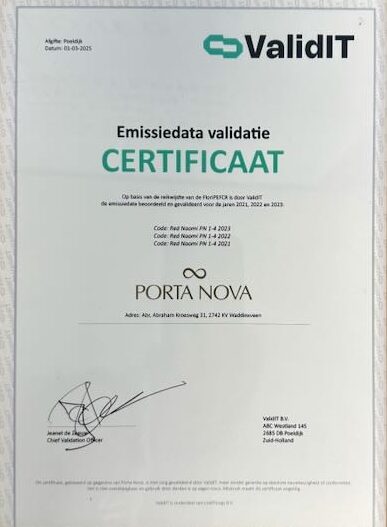
All our roses are available as FUTURA. How does that work?
Buying green wind energy as a company works similarly to how you might do it at home. It’s the same energy coming through the same power grid, but you specify to your supplier the desired energy source. This way, you can choose “grey” energy or various types of sustainable energy. Wind energy is the most sustainable, albeit at a premium.
Our goal is to switch to 100% wind energy in the coming years, but we can only achieve this together.
This is why we are offering all our roses under a FUTURA scenario. You can choose any of our sub-brands (Supra, Unica, Magna, Hollanda) as FUTURA. Every month, we will purchase the corresponding percentage of wind energy to sustainably grow these roses based on Futura orders. This process will be audited by an external company to ensure we uphold our claim to grow these roses with the lowest carbon footprint possible.
*Switching to wind energy involves additional costs. For example, by not using our gas turbine CHP, we need to purchase additional CO2, which we would normally obtain as a by-product.

Future improvements and full Life Cycle Assessment.
Looking ahead, having the lowest CO2 footprint is fantastic, but there’s more to consider than just CO2. That’s why this year, we’re diving into a Life Cycle Assessment (LCA) across 16 categories. We’re confident we’ll fare well in many areas, given our ongoing efforts.
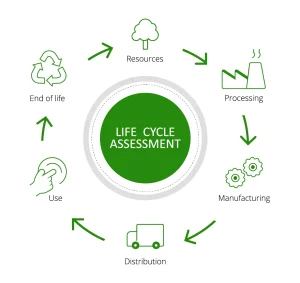
For example, we collect rainwater from our roofs and our neighbours’, creating a local “spa” with our indoor dune to use as the base for feeding our plants. Our fertilizing systems are closed, with 100% reuse of excess water—nothing is spilt in our greenhouses
Furthermore, we aim for 100% biological pest control, utilizing natural enemies to combat insects. We’ve even got a Solar (UVC) cannon patrolling the greenhouse to tackle other pests.
Confident that a full Life Cycle Assessment will reveal areas for further improvement, we are committed to ensuring we continue to grow the world’s best red roses with minimal impact on the environment.
Read all about the techniques we are using:
Discover Porta Nova’s sustainable energy source
Granted, when you enter the Green Room, nature is the last thing that springs to mind. The first thing you notice is the complicated system of pipes that is more likely to make you think of technology and innovation than a sustainable energy source. But still, this space is fully in line with our commitment to a low carbon footprint and the desire to grow without using gas. This is where we get the power for our climators, which naturally heat the nursery in winter and cool it down in summer. To achieve this, we need to descend 100 metres and delve beneath the clay of Waddinxveen. Here the temperature is extremely stable, and hot water stays hot for months while cool water stays cool for equally as long.
Climators and green electricity let us grow without gas
We all know by now that using gas produces carbon emissions that has a direct impact on the environment. Porta Nova wants to grow without using gas, and we are doing this by using climators and green electricity. We can buy in green electricity thanks to the installation of a 6 km private power line.
A hot and cold tide, from 100 metres below ground
For our heating in winter, we store hot water 100 metres below ground. This water is pumped through the heat exchanger in the Green Room. It then releases this heat to the climators, which bring the greenhouse to exactly the right temperature. The cooled water goes back into the ground. In summer this cold water is pumped back up to help the climators blow cool air into the greenhouse. This creates a stable climate that results in roses of a stable quality all year round.

Lowest carbon footprint per rose
Porta Nova wants to grow without using gas, and it will not compromise on this. Our newest greenhouse is heated and cooled in a sustainable way. We buy in CO² from the port of Rotterdam, where it is available as a residual product, and use it in the greenhouse so our roses grow even better. All with the goal of achieving the lowest carbon footprint per rose.²
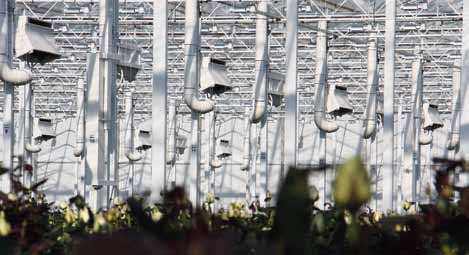
Heat exchangers use a separate circuit
The water in the heat exchanger always stays in its own closed circuit and is used solely as an energy carrier. The heated or cooled water is transferred to the Climators in the greenhouse. This means we do not affect the balance of the groundwater.
Enough for ourselves and plenty more besides
Sharing is caring. We harvest more energy than we need, and have plenty of residual heat that could be used to heat a large number of homes in the area. This means that, in addition to growing our quality red roses, we can help our local area become a little greener.
Porta Nova is ready for growing top-quality Red Naomi roses this coming winter, with 100% FULL LED
In the September 2023, we have finished installing LED lighting to 100%. Porta Nova has researched and developed LED Lighting with various LED light experts for many years, looking for the ultimate “light recipe” for our roses.
With LED light, you can determine exactly which colors/radiation you use. Together we have found the ultimate spectrum for our roses last year. We started with 50% LED light in 2022 and have completed installing 100% FULL LED in all our greenhouses in September 2023.
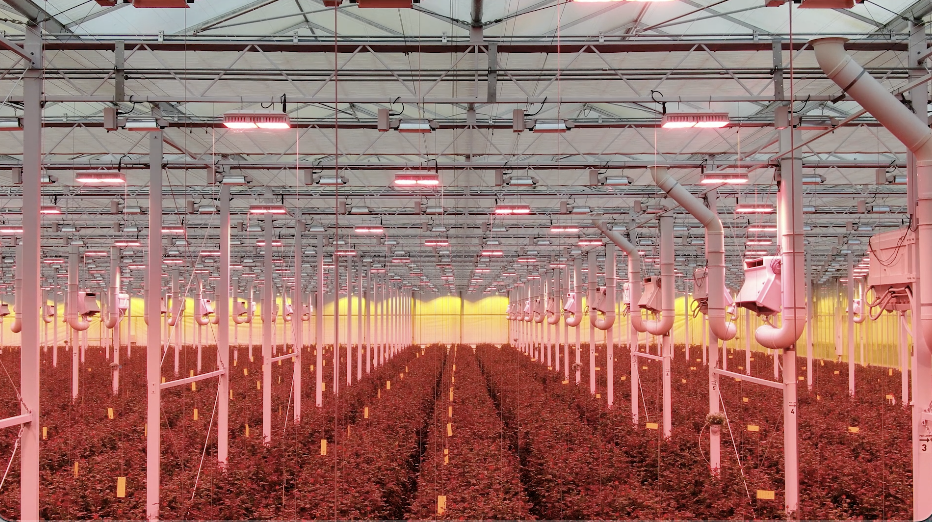
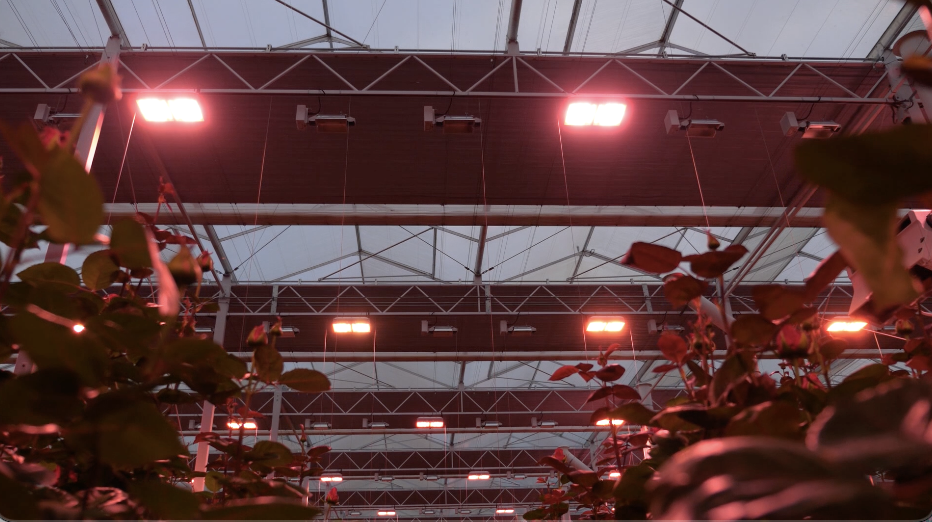
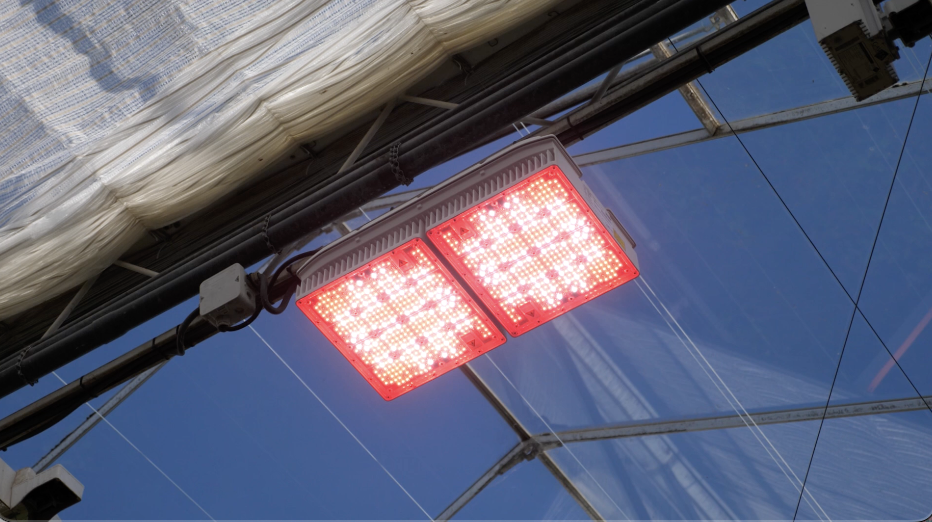
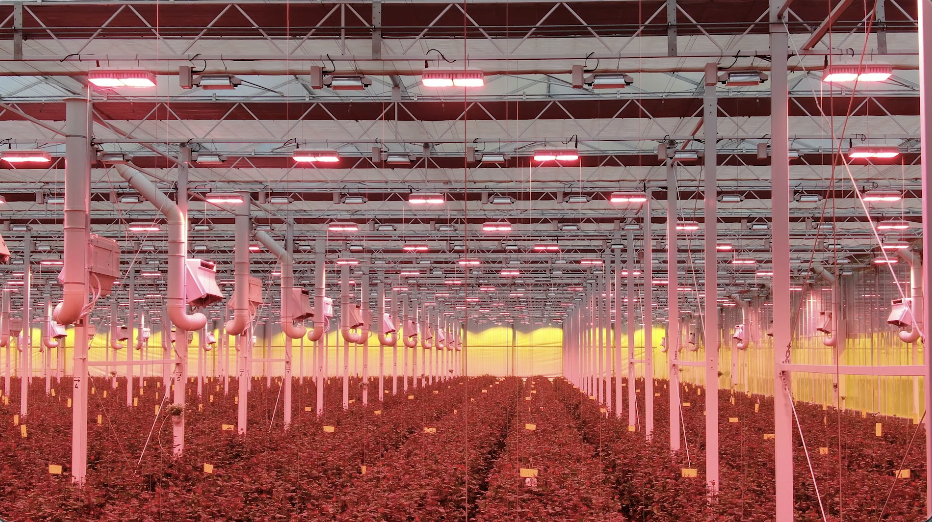
LED light installed in all our greenhouses
Traditional “Sont T light” also gives off excess heat which LED does not. In winter, that “leaking” heat was partly heating our greenhouse.
But we are able to “harvest” so much heat in summer with our Climator system, which is stored 100 meters underground. So that we have more than enough sustainable heat to use in winter together with efficient LED Lighting.
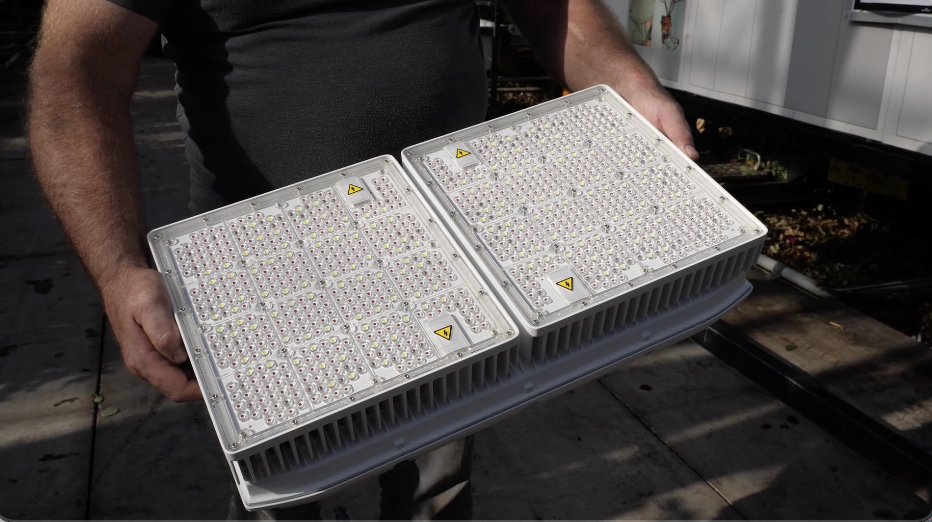
Led Light 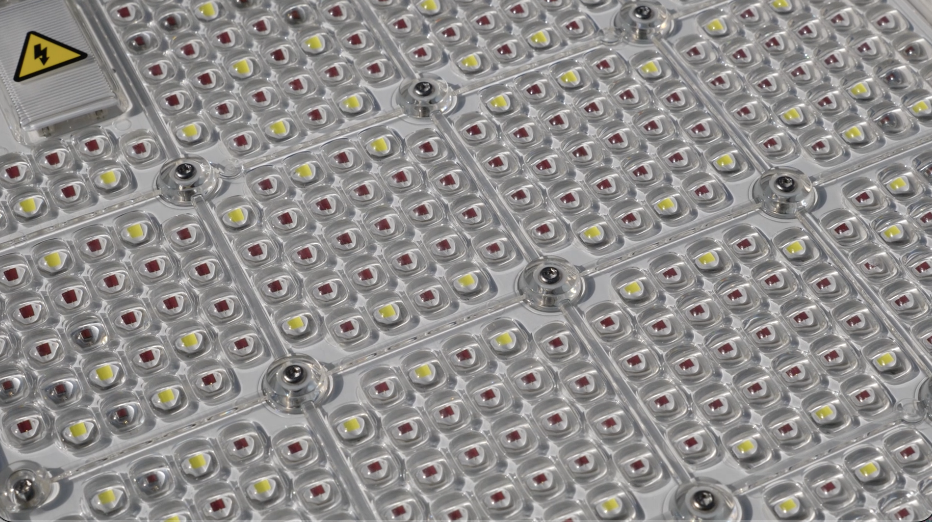
Ultima Light Recipe 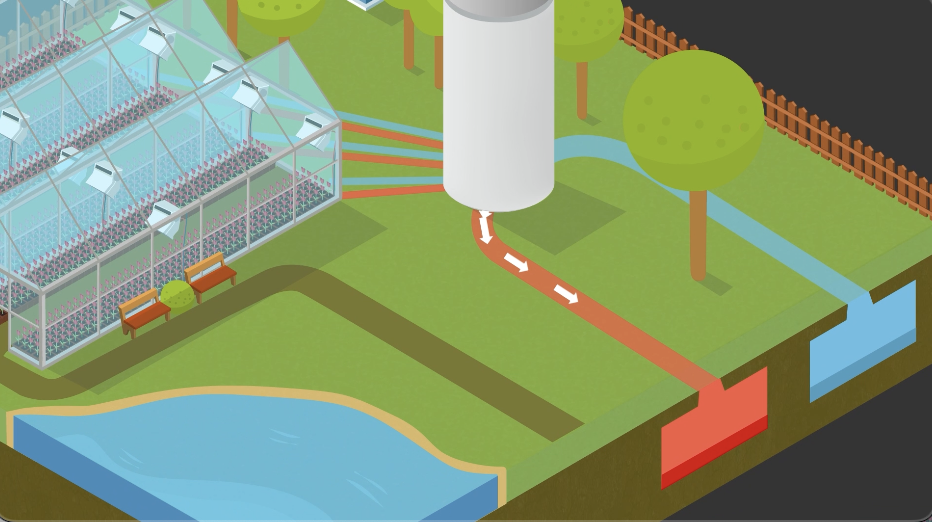
Harvest heat in summer 
Heat in winter
Thanks to this special “LED Light” in combination with the heat from the Climators, we can save 40% on lightning costs this winter.
In addition to sustainability and cost aspects, we also expect production and quality to become even more stable because our roses are presented with the perfect light spectrum.
Thanks to our new 100% “LED light” and our unique “Climator System” in which we store heat from the summer underground and use it for heating in the winter, we will be able to grow top-quality roses this winter and for Valentine 2025!
